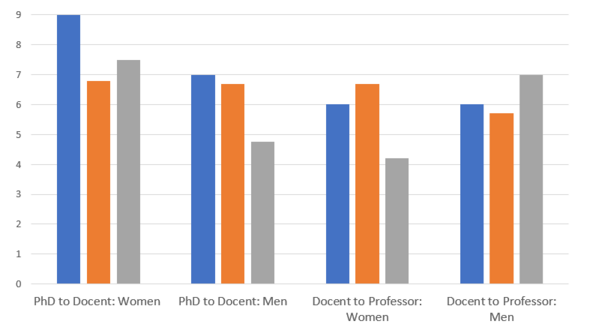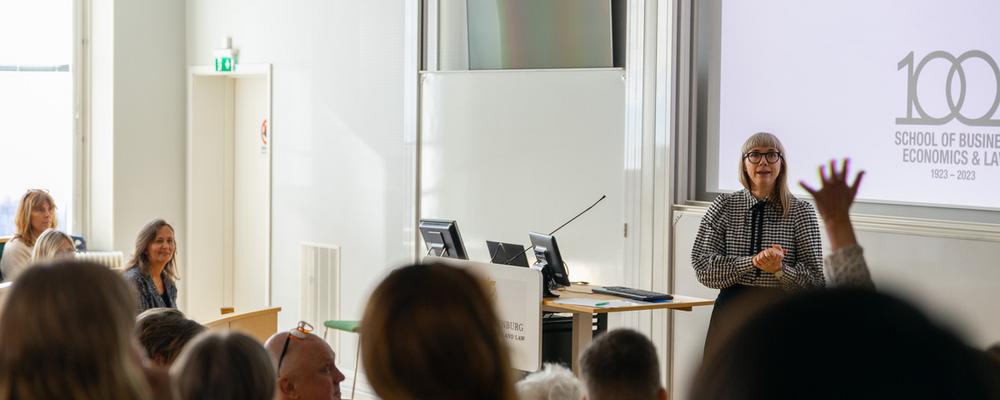
- Home
- News and events
- Find news
- The School of Business, Economics and Law needs to become more equal
The School of Business, Economics and Law needs to become more equal
Of the School's students, 52% are women, but among the professors, the proportion of women is only 30%. Why do women become fewer the higher you go in the academic hierarchy, and what does the School need to do to become more equal?
On March 8 - the International Women's Day - the seminar "100 years of solitude: Gender and equality at the School of Business, Economics and Law" was held. When the School started in 1923, there were 11 students, all of whom were men. In 1959, the number of students had increased to 500, of which 17 were women. In 1994, the School had its first and so far only female Dean and in 1995 its first female professor.
Today, the School has a relatively large proportion of female professors, if you compare it to other business schools in Sweden, but still only 30% of the School's professors are women. Within business administration, the proportion is only 20%. What are the reasons for this, and how can gender equality increase? During the seminar, the importance of meritocracy was discussed, i.e. that promotion is based on knowledge, merit, skills and abilities.
The debate on the evaluation of research performance is becoming increasingly intense in academia all over the world, not only in Sweden. The debate is about questioning an overly high focus on bibliometric parameters, and about how high research quality can be combined with high societal relevance.
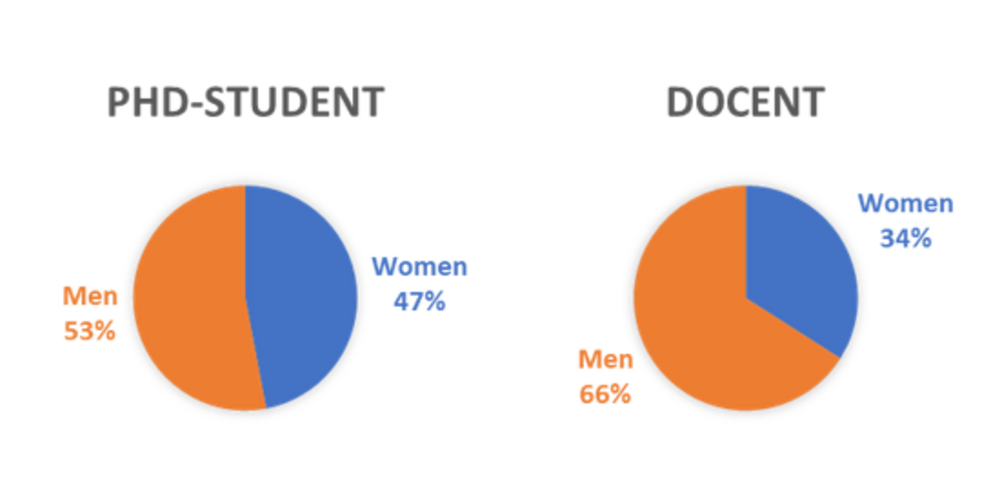
More statistics can be found at the end of the article.
Hello there, Maria Norbäck, one of the organisers behind the seminar
How did the seminar go?
It went great! We showed new statistics on how unequal the School is, and there was a clear picture of an organisation where the women become fewer and fewer the higher you go in the academic hierarchy. The departments of business administration and economics are particularly bad at gender equality.
Approximately 60 people were present, seven of whom were men. This shows that gender equality is still an issue that men are generally uninterested in.
What was the debate about?
The debate became largely about meritocracy. Despite research showing that meritocracy, in the sense of excellence and competence, is gender-coded in favor of men (in the way that men are associated with competence and excellence in a way that women are not), leaders in academia insist on treating meritocracy as something which has nothing to do with gender. Continuing to talk about meritocracy without discussing how, for example, criteria for merit are gender-coded and reproduce inequality is very problematic.
Did something unexpected come up?
Many were probably surprised that the Department of Law has succeeded better in terms of gender equality (measured in the number of female associate professors and professors) than Business Administration and Economics. But even within law departments, the Swedish average is that 70% of the professors are men. It is really only in comparison to the economic disciplines, where the proportion of women is even smaller, that such a figure can look good.
What can the School do to increase gender equality?
The School needs to go from just talking to takning action. Management must demonstrate a pronounced long-term strategy to address its unequal organisation. There are good opportunities to work actively with gender integration, if the organisation wants to. It is largely about putting pressure on the departments and their management. That is where much of the everyday work takes place, with merit matters, career development, allocation of workload and resources between individuals etc. A more equal school also requires a revision of the criteria governing career development, which should include broader aspects of academic work, and not as now have a one-sided focus on scientific publications in high-ranked journals
Statistics
Source: the data register at the University of Gothenburg and statistics from the departments of Business Administration, Economics and Law (not from Economy and Society).
The gender distribution per department
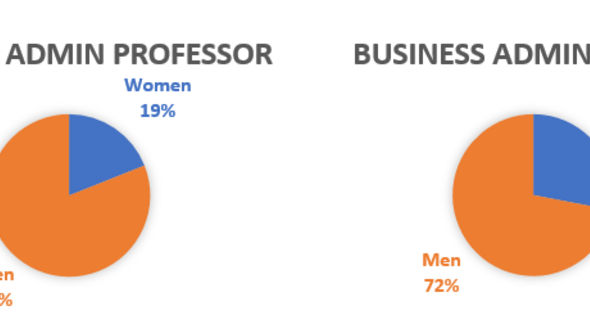
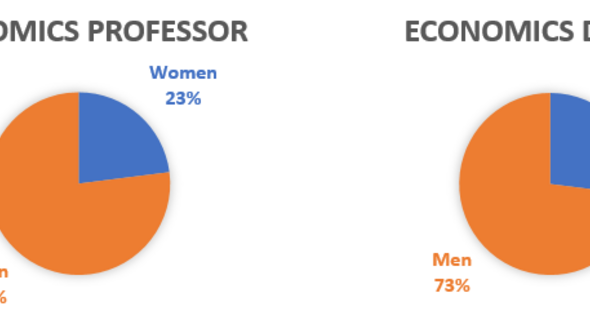
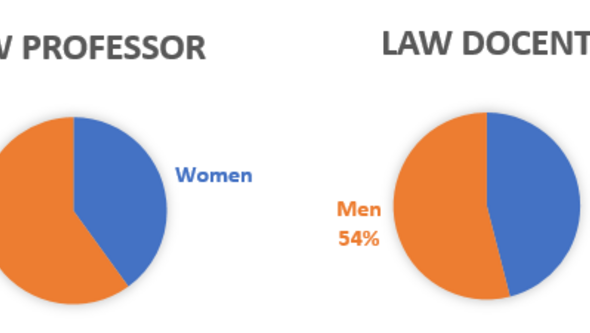
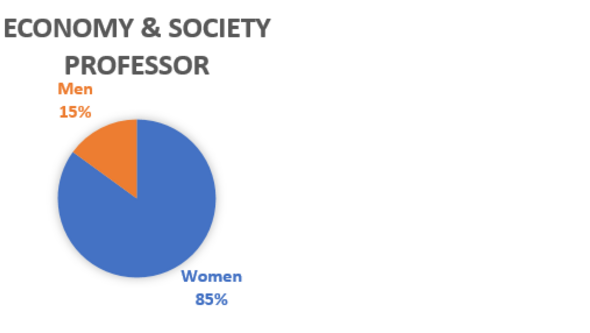
The number of years it takes men and women respectively to move between the various academic career stages
